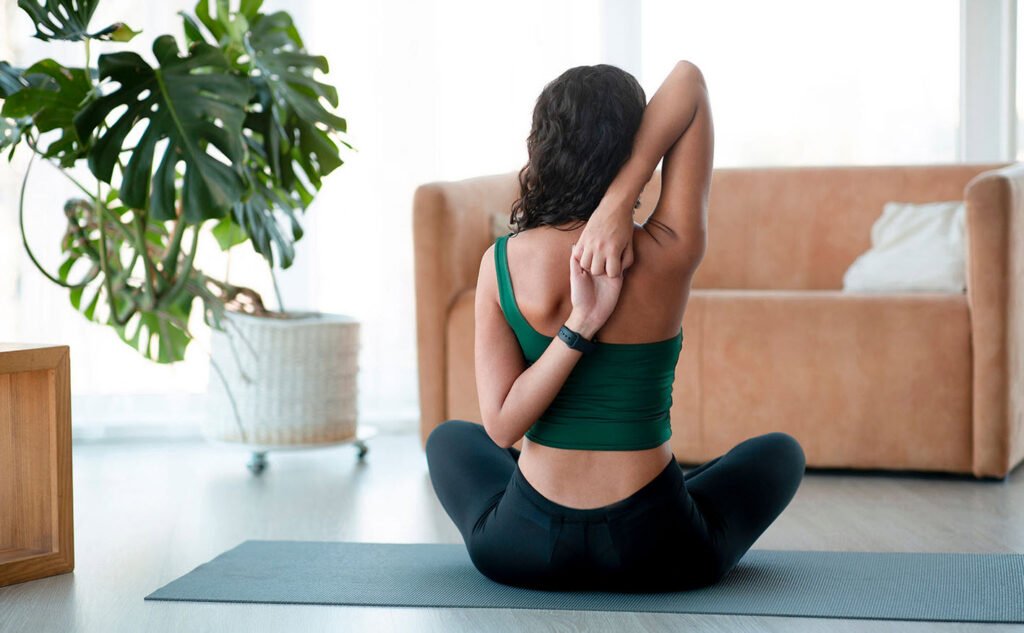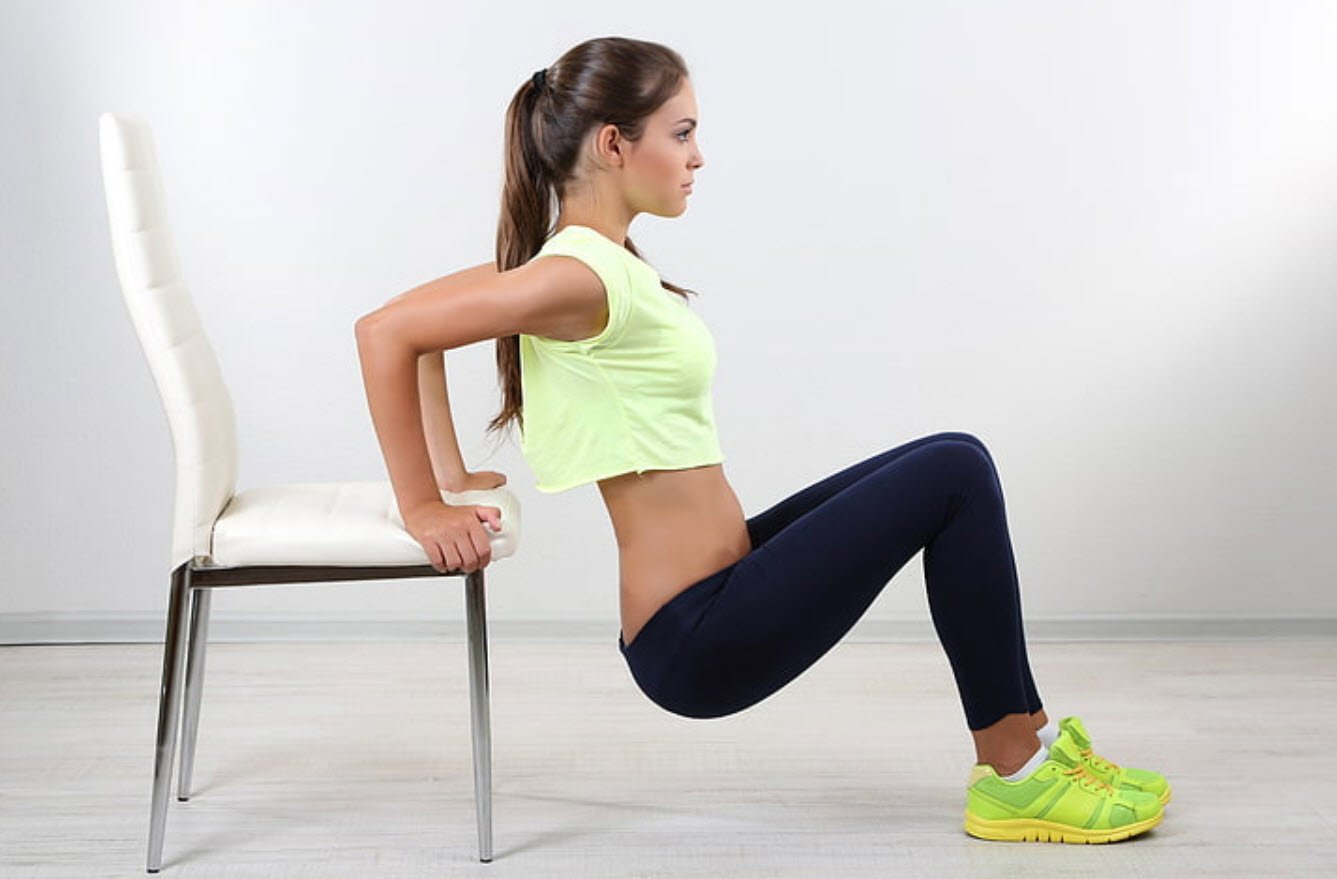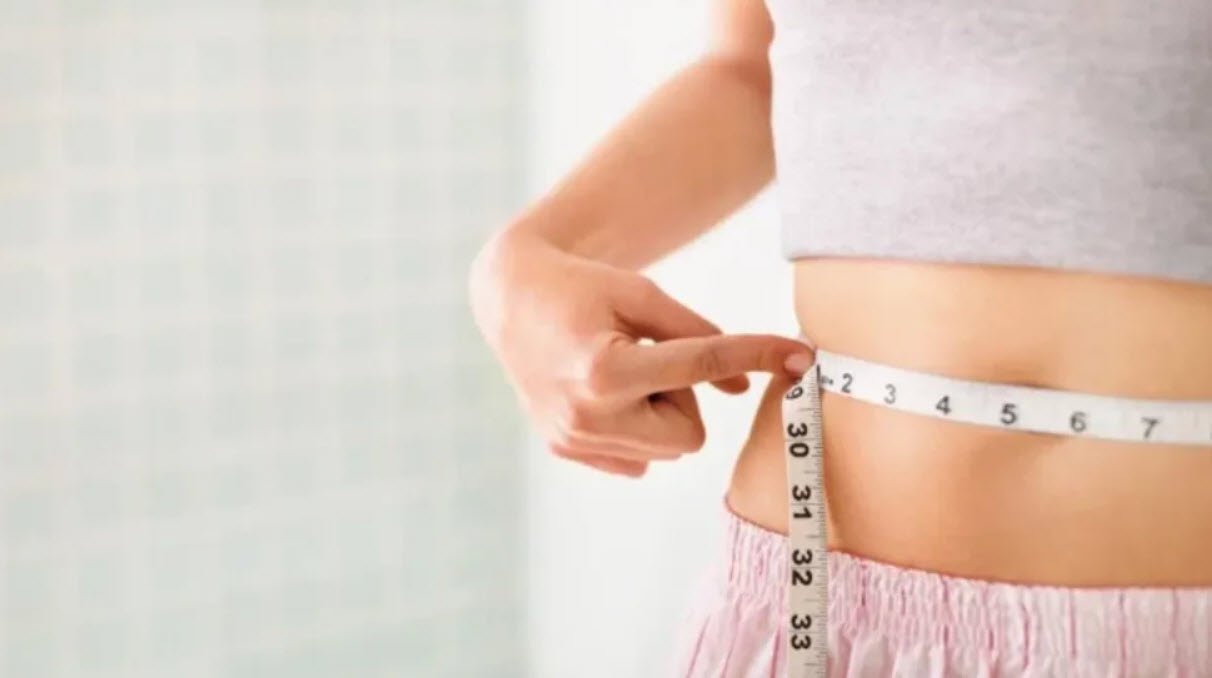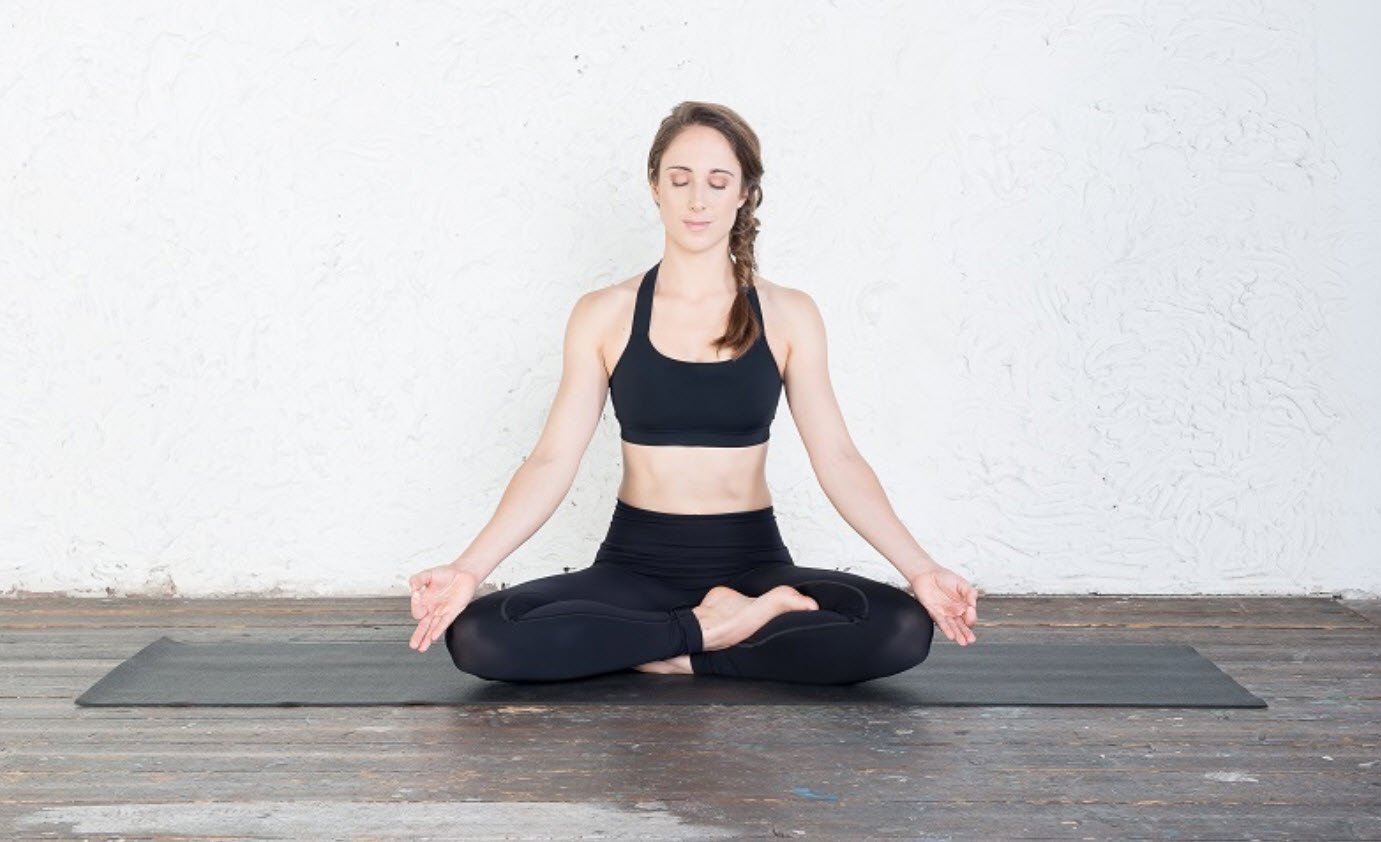
The strap behind back stretch is an effective exercise that targets the chest, shoulders, and upper back. It helps to increase the strength of the upper back muscles while simultaneously stretching the muscles in the chest and shoulders.
This stretch is particularly useful if you don’t have the flexibility to clasp your palms together behind your back or if you want to specifically target the middle and upper trapezius muscles. By incorporating a strap into this stretch, you can enhance the benefits and safely improve your range of motion.
Let’s explore the technique and practical benefits of this exercise.
Technique:
1. Strap Positioning: Begin by holding a strap with both hands behind your back. Hold the strap with an overhand grip, palms facing your body.
2. Shoulder Positioning: Draw your shoulders down and back, emphasizing good posture. This helps open the chest and engage the upper back muscles.
3. Shoulder Blade Engagement: Pinch your shoulder blades together, focusing on the muscles between the shoulder blades. This further activates the upper back muscles.
4. Strap Extension: Begin pulling the strap in opposite directions, creating tension in the strap. As you do this, imagine lengthening your arms and lifting the strap away from your back. Maintain the position of your shoulders throughout.
5. Forward Fold: To deepen the stretch, gently hinge forward at the hips while maintaining the tension in the strap. Press your shoulders away from your ears and reach your hands toward the ground.
Tips:
- Strap Adjustment: Adjust the length of the strap to find a comfortable level of tension. The closer your hands are toward one another on the strap, the more intense the stretch will be. Experiment with different positions to find what works best for you.
- Mindful Shoulder Position: Keep a conscious focus on maintaining proper shoulder alignment throughout the stretch. This ensures that you target the intended muscles effectively and minimize the risk of strain or discomfort.
- Gradual Progression: If you are new to this stretch or have limited flexibility, start with a comfortable level of tension in the strap and gradually increase it over time. Be patient with your progress and listen to your body’s limitations.
- Breathing and Relaxation: Breathe deeply and exhale as you relax into the stretch. Allow any tension in the chest, shoulders, and upper back to release with each breath.
- Regular Practice: Consistency is key. Incorporate this stretch into your routine regularly to experience the cumulative benefits. Aim to practice it several times a week for optimal results.
Practical Benefits:
- Chest and Shoulder Stretch: The strap behind back stretch effectively stretches the muscles in the chest and shoulders, particularly the pectoralis major and minor. This helps counteract the effects of poor posture and tightness in these areas, improving flexibility and reducing discomfort.
- Upper Back Strength: By engaging the upper back muscles and pinching the shoulder blades together, this stretch also helps strengthen the middle and upper trapezius muscles. This promotes better posture, scapular stability, and reduces the risk of shoulder and neck injuries.
- Improved Range of Motion: Regular practice of this stretch can enhance the range of motion in the shoulders, chest, and upper back. It allows for greater freedom of movement and supports proper alignment during various physical activities.
- Postural Alignment: The strap behind back stretch encourages good posture by opening the chest, lengthening the spine, and promoting a balanced shoulder position. This can lead to improved postural alignment and a reduction in tension-related discomfort.
Remember to approach this stretch with patience and respect for your body’s limits. If you experience any pain or discomfort, adjust the tension or seek guidance from a qualified professional. With consistent practice, the strap behind back stretch can be a valuable addition to your routine, helping you achieve greater flexibility, strength, and postural alignment in the chest, shoulders, and upper back.








